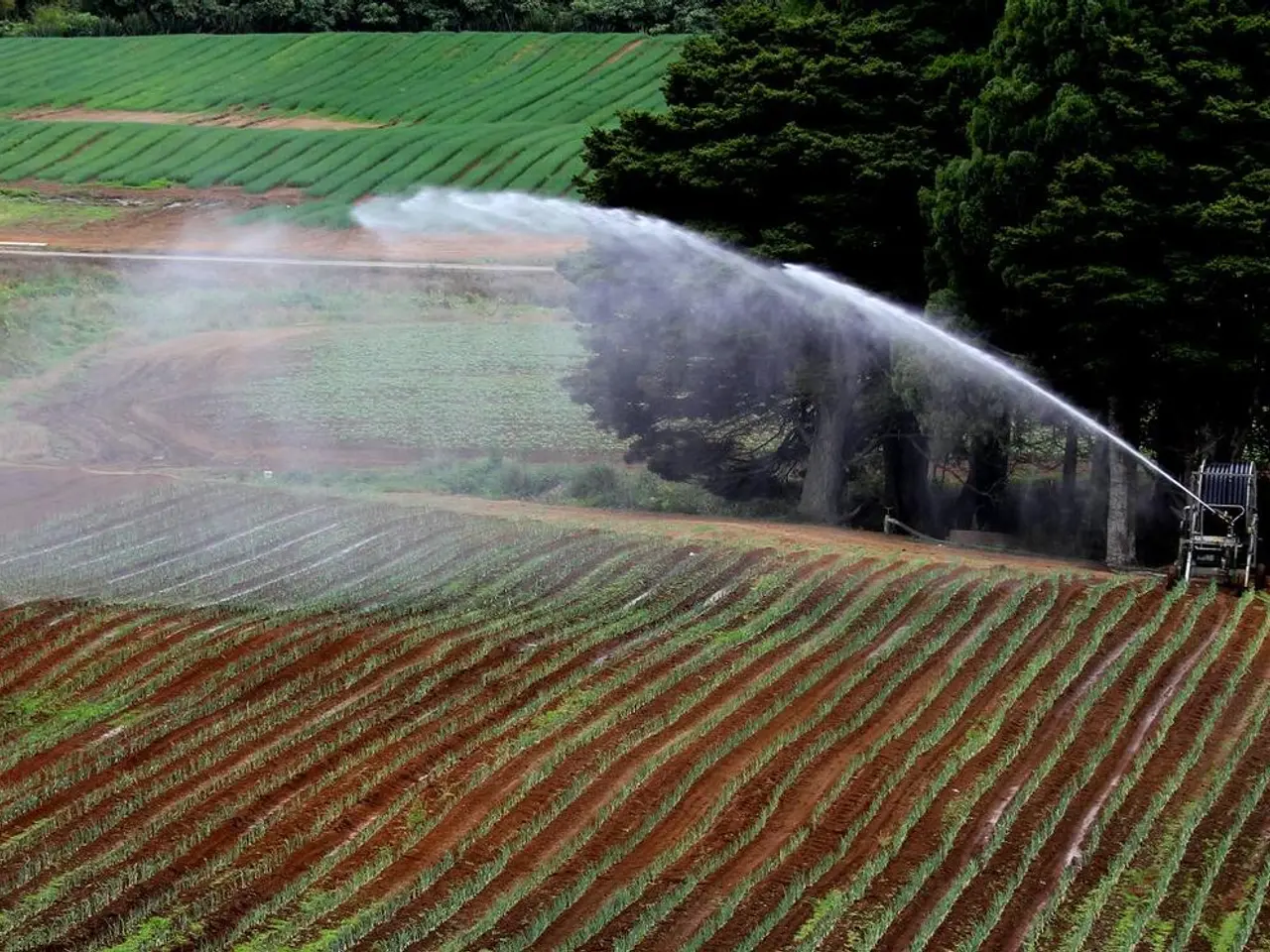Transforming Carbon Tracking in Agriculture Through Artificial Intelligence
Artificial Intelligence Revolutionizes Agricultural Emissions Monitoring and Climate-Smart Agriculture
Artificial Intelligence (AI) is making significant strides in agricultural emissions monitoring, playing a crucial role in the transition towards climate-smart agriculture. The technology is being employed in precision agriculture, optimizing the use of resources and reducing emissions.
One of the key AI systems in this field is KGML-ag. This innovative technology is designed to assimilate diverse satellite data types, helping researchers investigate ways to optimize forest carbon storage and management. The KGML-ag-Carbon model, in particular, is based on causal relationships identified within agricultural models, pre-trained on synthetic data, and fine-tuned using real-world observations.
KGML-ag is proving to be a game-changer in various sectors, supporting the wider adoption of sustainable practices. By enabling the accurate monitoring and verification of agricultural emissions, it contributes to the combat of climate change while benefiting rural economies.
The use of AI in agriculture is multifaceted. It optimizes inputs such as fertilizers and water, precision irrigates, operates autonomous machinery, and employs drone and satellite monitoring for targeted interventions. Digital twins and AI agents also adjust farming strategies in real time, supporting climate-resilient operations and lower emissions. Moreover, AI aids carbon credit markets by providing precise, verifiable data on emissions reductions and carbon sequestration efforts on farms.
The benefits of using AI in agriculture are numerous. It increases productivity with lower inputs, reduces greenhouse gas emissions, conserves water, supports climate goals, and enhances the scalability and transparency of carbon markets. AI technologies align agricultural practices with global climate and sustainability targets, making farming systems more resilient to climate change.
The success of KGML-ag in agriculture demonstrates the transformative potential of AI in combating climate change on a global scale. Its applications are not limited to agriculture; it is now being explored in sustainable forestry management. This innovation is instrumental in bridging the gap between technology and sustainability, fostering trust in carbon markets, and supporting the wider adoption of sustainable practices across various sectors.
References: [1] [URL] [2] [URL] [3] [URL]
- The KGML-ag-Carbon model, an AI system, is based on causal relationships identified within agricultural models, pre-trained on synthetic data, and fine-tuned using real-world observations, making it a key tool in environmental science for optimizing forest carbon storage and management.
- Artificial Intelligence (AI) is not just revolutionizing agricultural emissions monitoring and climate-smart agriculture, but also expanding its influence into other environmental science domains, such as sustainable forestry management, by bridging the gap between technology and sustainability.
- Beyond its impact on agriculture, AI technologies hold promise for data-and-cloud computing, particularly in the realm of climate-change research, as they can aid in the processing and analysis of massive amounts of data required for informed decision-making and policy development, contributing to the fight against climate change and supporting the adoption of sustainable practices across various sectors.




